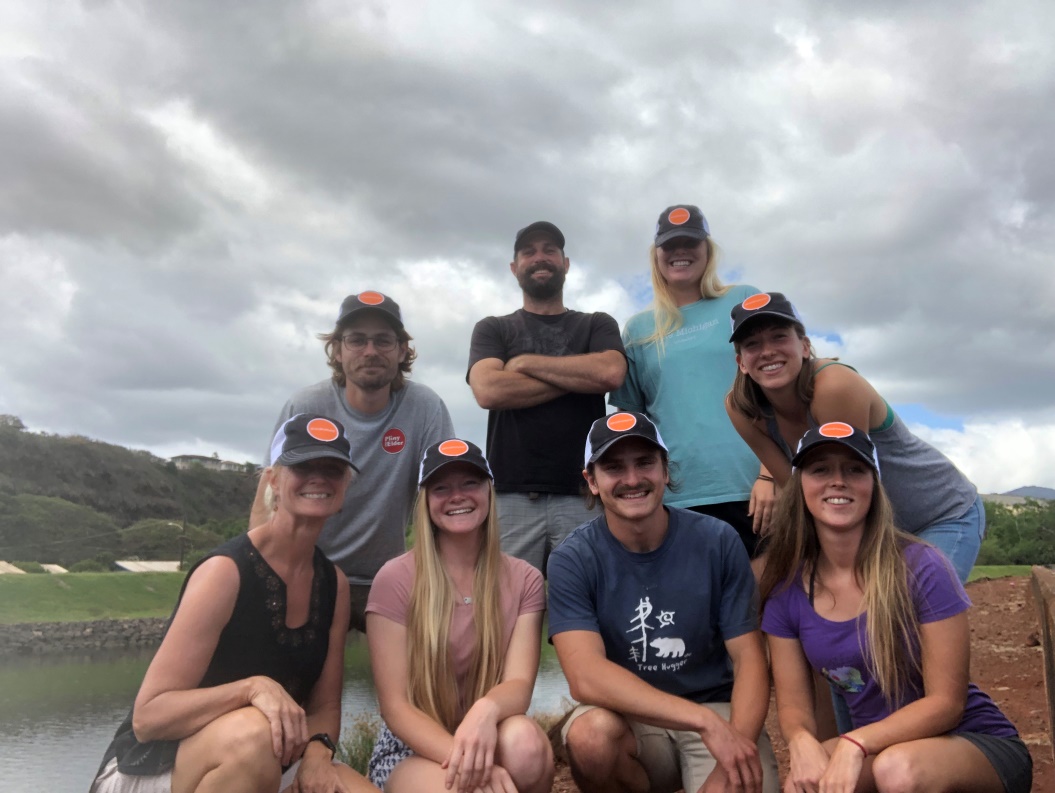
KFBRP 2019 Crew From left to right: Cali Crampton, Tyler Winter, Lauren Smith, Justin Hite, Noah Hunt, Abby Kreuser, Erica Gallerani, Bryn Webber
During our 2019 field season, we spent considerable time trapping rats! Rats kill a lot of birds, so making sure our rat traps are working is very important. We did a carcass study where we monitored the decay rates of birds and small mammals in order to understand the predation and decay rates of animals in the forests where we have our rat traps. We also put out cameras at many of our rat traps to see how animals interact with traps. Through these efforts, we now we have a better idea of who is showing up at our traps, how many rodents are actually being killed, and what the data we are collecting actually means!
In 2019 we erected a loose grid of eight telemetry towers donated by Kauaʻi DOFAW and USGS and put transmitters (some donated by Holohil) on a score of native forest birds, which allowed us to track the movements of individual birds. We discovered interesting behavior from the telemetry data, including movements of ʻAkekeʻe and the ‘Akikiki.
In order to get transmitters on birds, we had to mist-net to catch birds. During this process, we caught many birds that we did not put transmitters on, but got very valuable data from these incidental catches including information on the prevalence of malaria and survival rates, and bird population information.
Another major project was surveying mosquitoes at our main Halepaʻakai field camp once a month from April-August. We also sampled a half-dozen other sites on and off the Plateau during this period. These data will help inform mosquito control to protect our birds from avian malaria.


 Bryn Webber
Bryn Webber